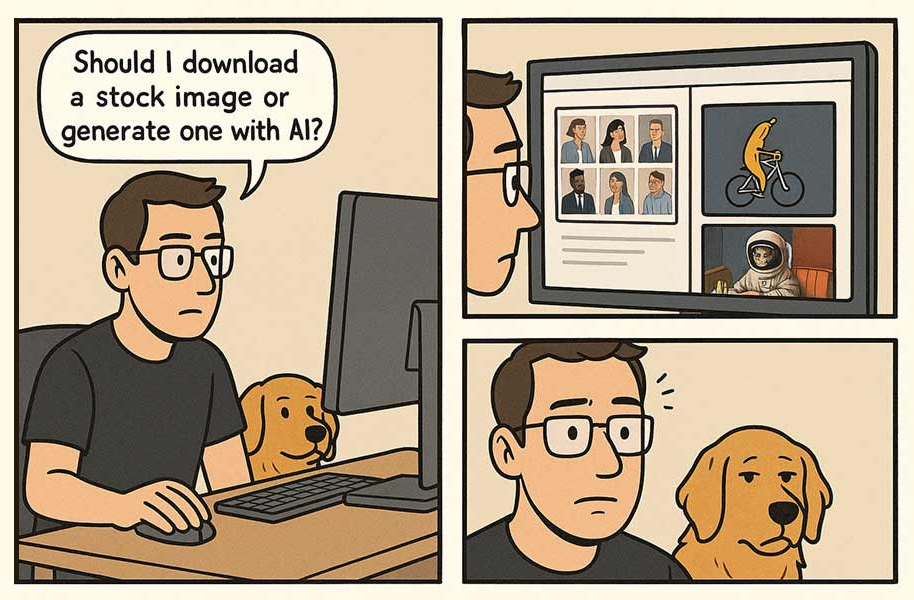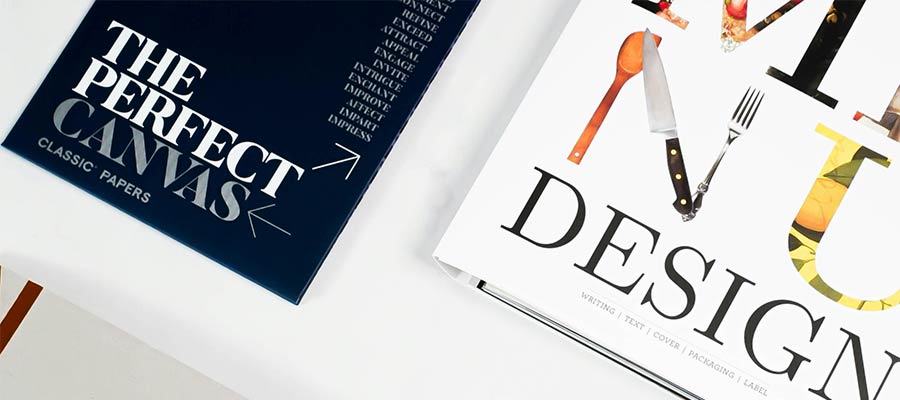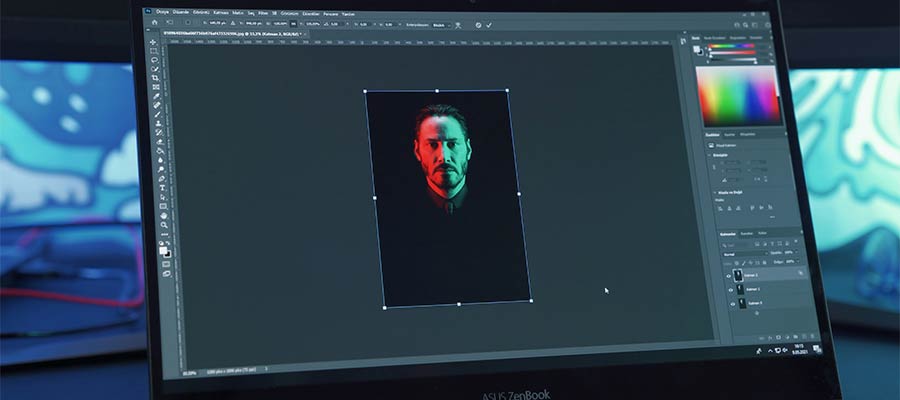Gemini Robotics showed that generalist transformer models might be the future of robotics….
Could AI slow science?
Confronting the production-progress paradox…
First Look at New Atomos Products: A-EYE PTZ Cameras, StudioSonic Audio, and More

Explore the latest innovations from Atomos in this hands-on product overview from Videoguys. We highlight the brand-new A-EYE PTZ cameras, available in 4K and HD with 12x or 20x zoom, built with AI-powered tracking, NDI|HX3, and a full range of outputs including HDMI, SDI, USB, and IP streaming. You’ll also get a look at the new StudioSonic audio gear—including headphones and a shotgun mic—as well as wireless TX/RX systems, the Sun Dragon lighting solution, and the complete Atomos monitor-recorder lineup.
Whether you’re a content creator, educator, worship tech, or live production pro, this Atomos gear is designed to simplify multi-camera workflows and deliver professional-quality results.
📺 Watch the video below to see the full breakdown and get expert insights on how to elevate your workflow.
[embedded content]
Atomos A-EYE PTZ Cameras: AI-Powered 4K and HD Options for Pro Video Workflows
Across the A-EYE Range
- Included NDI|HX3
- Supports H.265, H.264, and MJPEG compression
- Output options include RTSP, RTMP, and ONVIF
- Power over Ethernet (PoE+)
- Slots into existing multi-camera environments
- Integrates seamlessly with third-party PTZ systems
Built For Every Workflow
- Content Creation: A-Eye brings hands-free professionalism to solo creators.
- Education: A-Eye auto-frames instructorsas they move betweenboards, screens and students
- Business/Enterprise: Presentors move freely across the room or stage
- Live Events: From Keynote Speakers to Musicians, A-Eye delivers wide and close up shots.
- Houses of Worship: Connect with remote congregations by capturing every word and gesture
- Sports/Coaching: Coaches and analysts capturethe action with ease. Trackmovement and zoom with ease
StudioSonic Audio Gear: Headphones and Shotgun Mic for Content Creators
StudioSonic Headphones
|
Professional wired over-ear headphones crafted for video and audio content creators
|
StudioSonic headphones deliver a transparent, distortion-freesound across deep lows, detailed mids, and crisp highs—perfectfor confident, creative audio work.
StudioSonic’s 105dB sensitivity and 30Ω impedance power pro interfaces seamless with Atomos Ninja/Shogun, field recorders, DJ gear, and mobile devices—no amp needed.
StudioSonic’s closed-back, over-ear design blocks noise forfocus, while rugged build and plush memory foam pads deliverlasting comfort in hybrid workflows.
StudioSonic Shotgun Microphone
A compact yet powerful wireless and wired shotgun microphone designed for filmmakers, journalists, YouTubers, and production professionals. It’s the perfect match for Atomos’ Ninja and Shogun monitor-recorders, as well as professional cameras and recording devices.
|
Wireless Transmitters and Receivers for Flexible Video Production
A UHD/HD wireless video transmitter and receiver system designed to streamline video monitoring and production workflows. On set, on location, or in the studio.
- Transmits up to 4Kp30 over HDMI / 1080p60 over SDI
- Range of up to 300 meters (985 feet)
- Supports up to 4 receivers per transmitter
- Powered by NP-F battery, USB-C or DC input (9–16V)
- Reliable, scalable, cable-free solution
- Set includes 1 transmitter and 1 receiver
- Additional receivers purchased separately
TX-RX offers reliable, wireless monitoring for creators, directors, andbroadcasters who need mobility and flexibility. Its compact, rugged build isdesigned for demanding environments without adding extra bulk orcomplexity, making it perfect for hybrid workflows that scale.
TX-RX offers multiple power options: DC input (9–16V), USB-C (5V/2A),and compatibility with standard NP-F batteries. Whether you’re in a studioor on a remote shoot, powering TX-RX is simple, reliable, and adaptable.
Turn either an iPhone or Android phone into a receiver and viewvideo wirelessly using the free to download apps.
Sun Dragon: Professional Lighting Solution for Filmmakers and Content Creators
The world’s first sun spectrum, HDR, waterproof, DMX controlled,2000 lumen 5-color LED, mount-anywhere, lightweight flexibleproduction and cinema rope light
|
Atomos Monitor-Recorder Lineup: Capture, Monitor, and Stream with Confidence
Shinobi Range of Monitors
|
|
Shogun Ultra
|
Ninja Range of Monitors / Recorders
|
|
Ninja Phone
Transform your iPhone into a HDR recorder, monitor and streamer for your DLSR/mirrorless camera
|
Now with 4K streaming! Ninja Phone turns your smartphone into a high‑end 10‑bit recorder, monitor and streamer for your professional video camera or other HDMI‑equipped device. With iPhone 15/16 Pro:
|
SUMO 19SE
A bright (1200nit), HDR touchscreen covering the DCI-P3 (P3) Color Gamut, and able to record Apple ProRes RAW up to 6Kp30. With its rugged and versatile design, the Sumo 19SE is the perfect addition to an on-set video village.
|
What I Took From the State of Dev 2025 Survey
State of Devs 2025 survey results are out! Sunkanmi Fafowora highlights a few key results about diversity, health, and salaries.
What I Took From the State of Dev 2025 Survey originally published on CSS-Tricks, which is part of the DigitalOcean family. You should get the newsletter….
The Sequence Weekly Alpha #686: Kimi K2 is a Trillion Parameter Open Source Model You Must Know About
The new chinese model is pushing the boundaries of open source AI….
How to use AI to start an online business
Nearly every online business now touches artificial intelligence at some point. Research from 2025 shows 78% of companies worldwide use AI for at least one business area. Smaller businesses report higher usage, with 89% saying they use AI each day. Over 280 million businesses worldwide now…
Military AI contracts awarded to Anthropic, OpenAI, Google, and xAI
The Pentagon has opened the military AI floodgates and handed out contracts worth up to $800 million to four of the biggest names: Google, OpenAI, Anthropic, and Elon Musk’s xAI. Each company gets a shot at $200 million worth of work. Dr Doug Matty, Chief Digital…
How Will AI Impact the Next Generation of Designers? — Speckyboy
AI models like ChatGPT and Gemini have only been around for a few years. Although many of us have become reliant on them, we still recall what life was like before they came around.
But what about future generations? For them, these tools will have always been an integral part of everyday life. Just as I can remember a time without smartphones, my teenage daughter can’t. She was born after the iPhone took the world by storm. Touchscreens and app stores are all she’s ever known.
I believe AI’s long-term impact will be even greater than the smartphone. We already see the technology infiltrating industries and education. Who knows where we’ll be by, say, 2030?
Many of us worry that AI will replace us at work and spread falsehoods. Those concerns are legitimate. However, I’m starting to worry about another issue: the devaluing of human creativity.
Creative industries such as design will feel the brunt of the impact. Here’s why the next generation of designers will inherit a much different world.
Artists Already Face Competition From Generative Tools
Generative models have improved their image-creating capabilities. Write a prompt, and within a minute or so, you’ll have an image matching your instructions. The process will only get faster.
The results aren’t always perfect. For example, I find ChatGPT’s model is inconsistent (and sometimes incoherent) with styling. But, after a few revision attempts, I often find myself accepting the output as good enough.
I now opt for AI-generated images instead of stale stock photography. It’s within reach and often a closer match to my needs. That’s both astonishing and a bit sad.
Yes, it takes less time to acquire a “passable” image. I don’t have to sweat over the details in Photoshop. Nor do I have to hire someone more talented to do it for me. In short, I’m willing to accept a lower-quality item because it’s easier.
I admit to being on the low end of the market. My graphic design skills aren’t the best, and I don’t have a budget for a professional. My turning to AI tools probably isn’t putting anyone out of work.
The danger is when companies that do have a budget for hiring professionals opt for AI. We’re already seeing that happen (to mixed results). More will surely come to the dark side.

Will New Designers Learn the Fundamentals? Will It Matter?
Traditionally, web and print designers learn about fundamentals. Philosophies regarding color, typography, and accessibility are crucial to producing quality work. Those lessons come from formal education and real-world experience.
But what do fundamentals mean in the age of AI? Quality control is not a strength of the current tools on the market. So, someone starting in design and using one of these apps may never get the opportunity to learn.
We’re seeing a similar trend in programming. For example, the ease of generating code has led to a significant uptick in WordPress plugin submissions. Now that “anyone” can code, the tenets of security and optimization could get lost in the shuffle.
There’s also a question about which tools future designers will use. ChatGPT’s text-based UI isn’t a design tool. However, Photoshop has integrated AI into the app, and it’s not alone. It seems like every major tool is jumping on the bandwagon. Project workflows could drastically change.
The boost in productivity is nice. However, we can generate assets without thinking twice about whether the result is any good. Such questions may never occur to a designer who hasn’t learned the fundamentals.
In a way, it’s reminiscent of the anything-goes 1990s. We built websites because they looked cool, regardless of whether they worked. Future generations may use AI without ever questioning the results.

Less Time to Create Something Beautiful
We humans aren’t the most patient of creatures. Thus, designers have always had to balance quality with project deadlines. AI might make the situation worse for creatives.
The ideal use for AI is as a helpful tool for generating small project assets or running utilitarian tasks. It’s a way to speed up the process while still relying on human know-how.
But some will undoubtedly give it an outsized influence. It’s not hard to imagine a stakeholder treating a designer as a mere prompt engineer. “We need this social graphic in the next five minutes. Just generate something. No, we don’t have time to worry about the font kerning.”
Project timelines may also be unreasonably accelerated. Clients will expect more productivity in less time and at a lower cost. Such thinking will give designers fewer opportunities to perfect their work.
That’s a shame, as it’s often the little details that make design stand out. Doing everything “fast and cheap” removes room for human creativity. Ironically, it also devalues an entire industry of professionals.
In this scenario, designers are no longer major contributors to a project’s direction. They become just another link in the supply chain.

Designers Gain Productivity While Losing Creative Control
The current crop of AI models can do some amazing things. Yet, they lack human logic and sensibilities. That makes them perfect for busy work, not creativity.
Regardless, continued technological advances and sales pitches will likely result in greater adoption. Similar to other technologies, stakeholders will be sold on the Utopian dream of a single tool that can do it all. Train AI on the law, and you’ll no longer need a lawyer. Train it on your branding materials, and you’ll no longer need a traditional designer.
The result is less space for an organic design process. You know, the thing designers are skilled at. The thing people spend thousands of hours learning and refining. The thing that sells everything from donuts to diamond rings.
I hope this won’t be the case, but I’ve seen this movie before. Perhaps, after a period of relying on machines, people will recognize the value of human creators and go back to them.
If not, the next generation of designers will play a much different role.
Related Topics
Setting Line Length in CSS (and Fitting Text to a Container)
The many ways to juggle line length when working with text… including two proposed properties that could make it easier in the future.
Setting Line Length in CSS (and Fitting Text to a Container) originally published on CSS-Tricks, which is part of the DigitalOcean family. You should…
FDA’s draft guidance on AI/ML has startups on high alert
Author, Eric Elsen, Forte Group. On January 7, 2025, the US Food and Drug Administration (FDA) released draft guidance titled “Artificial Intelligence and Machine Learning in Software as a Medical Device”. The document outlines expectations for pre-market applications and lifecycle management of AI-enabled medical software. While…

